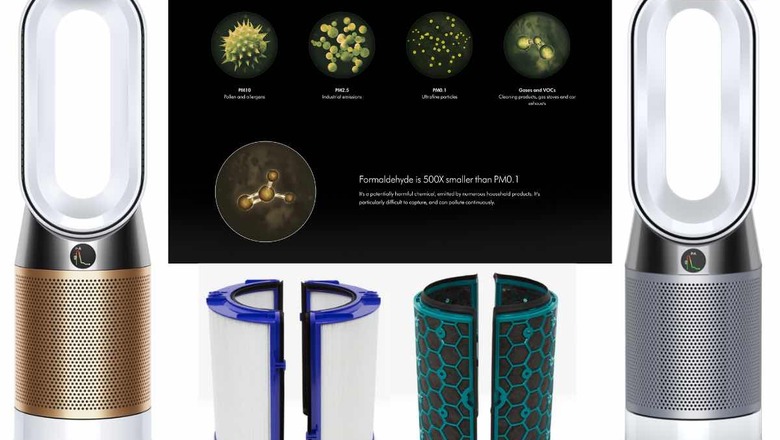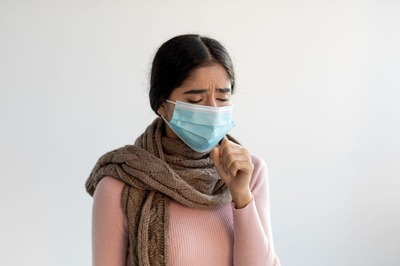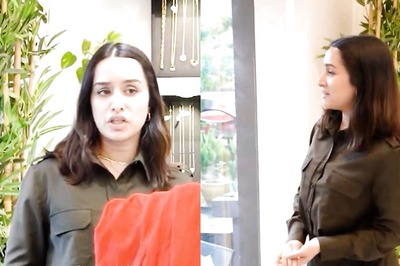
views
If you still aren’t a believer, reading the air quality and pollution stats for most Indian cities particularly in the winter months, will make you one. And you should be reading those stats. Because that’s the air you breathe in. The reality is, air purifiers for homes are no longer considered a luxury. It has now become a necessity—pretty much as essential a water purifier. This year, there is a new deadly twist. Scientists say that long term exposure to air pollution increases the risk of dying in case a person catches the coronavirus, or COVID infection. A study published in Cardiovascular Research by the European Society of Cardiology published last month suggests that the more someone has been exposed to air pollution, the lesser their chances of being able to fight the COVID virus. The numbers are worrying. The research says that an estimated 15% of deaths worldwide from COVID-19 could be attributed to long-term exposure to air pollution. In Europe the proportion was about 19%, in North America it was 17%, and in East Asia about 27%.
Add to pollution and airborne deadly assassins such as virus, there is the problem of indoor pollutants and dust. We just do not realize how polluted the indoor air is, once the extremely polluted outdoor air streams in and mixes with the cocktail of pollutants indoors—dust, volatile organic compounds, carbon dioxide, pet dander, smoke from cooking and more. We feel the air inside our homes is clean and safe. It isn’t. Sold on the idea of air purifiers for your home? In a conversation with News18, Michael Leat who is Design Engineer in RDD Environmental Care, Professional and Lighting at Dyson, shares his insights on what goes into developing an air purifier, the filters, whether air purifiers can be customized for different regions of the world, the new Cryptomic technology in Dyson air purifiers as well as the debate about what testing method is better.
Can you tell us about what goes into the product development for an air purifier that is supposed to work equally well in different parts of the world, with massively varying levels of air pollution and indoor pollutants?
Dyson machines are designed to function efficiently anywhere in the world, irrespective of the topography, or local climate conditions. With regards to air pollution, Delhi and some other cities in India have amongst the highest AQIs that we have ever recorded. So when we are trying to ensure that our air purifiers work everywhere in the world, the performance in New Delhi’s air quality becomes the upper limit on informing us of the levels we need to match in terms of improving our solutions.
While Dyson entered air purification in 2016, we started with the bladeless fans in 2009 which did not have air purification capabilities. While the bladeless fans became an iconic design, they also allowed us to project high velocity air across the room without the chopping effect that you typically get from fans. When it came to developing purification, we had to consider what we wanted from an air purifier, to come up with a methodology that will work best in all scenarios. The methodology that we were able to develop, followed the trilogy of ‘Sense’, ‘Capture’; and ‘Project’. In terms of sensing, we want the machine to be smart and intelligent, to detect pollution and react automatically, whilst switching off once the room is cleaned; in terms of capturing we wanted to have the best filtration technology available to ensure that our fully sealed filters are capturing all of the particulates and gases that go through the machine; and then finally, for projection we needed to ensure that we’re really projecting that clean air that we’ve now filtered across the whole room, rather than just the air that’s near the purifier itself.
Dyson engineers have calibrated the sensors inside the machines with scientific particulate readers. An array of 30 Dyson sensors have sat alongside air quality monitoring labs in both King’s College London and Peking University in Beijing to understand how Dyson sensors react and ensure they are delivering the same feedback as world-leading academic equipment. The sensors were left running outside in boxes for 6 months across 3 seasons in dirty, hot, wet and freezing conditions to gather long term running information. Collecting 288 pieces of data a second gave Dyson engineers over 5 billion data points for analysis and meant the most effective calibration possible could be applied to the new generation of machines.
Is it possible to customise the same purifier for local needs? Such as perhaps different types of filter options for dust, smoke etc?
We test our products using a number of different pollutants, particulates and gases. We use particles of different sizes to ensure that no matter the pollution challenge, Dyson technology will be able to purify the vast range of common pollutants. From 0.1 pm to 2.5 pm range, as well as the larger particulates, and of course gases like VOCs, including Formaldehyde and NO2. Testing is a huge part of the research and development.
POLAR vs CADR – which is closer to how we use purifiers in our homes?
A CADR score is the most commonly used way for a consumer to choose between purifiers. It claims to rate performance based on filtration efficiency whilst also purporting to demonstrate full-room performance. However, the current industry standard methodologies do not represent real-world homes, and since CADR scores are heavily based on the test chamber size, it means that these scores do not reflect the performance most consumers would see in their homes. These current testing standards dictate that tests to generate CADR ratings are conducted in a compact chamber just 12m2 in size, with an added fan to circulate the air, and only one sensor to measure air quality, which we can see is not at all representative of the average living room environment.
This is why we designed the POLAR test for air purifiers, taking into account bigger room sizes and a machine’s ability to purify it with no additional fans. In the POLAR lab, eight sensors in the corners of the room and one sensor in the centre collect air quality data every 5 seconds, detecting particles of indoor air pollution that are 300 times narrower than a human hair. Analysing the data across all nine sensors lets Dyson engineers ensure the Dyson air purifiers deliver a uniform cleaning performance throughout the whole room, so we’re left with an evenly cleaned room with lowered level of air pollution achieved throughout the room, as opposed to just around the air purifier. Educating the public about the problem of air pollution is just one half of the solution. Designing the right solutions that work in people’s homes, and not just to perform as per certain test standards that are no longer relevant, is important as well.
What is the Dyson Cryptomic technology? Not many people worry about formaldehyde…
Formaldehyde is colourless, yet a potentially harmful gas with high reactive properties. Many everyday household items can emit formaldehyde, including pressed wood products, antiseptics and cleaning agents, carpets, permanent press fabrics, cigarettes, cosmetics, paints and varnishes. Presence of formaldehyde may cause individuals to experience adverse effects such as watery eyes; burning sensations in the eyes, nose, and throat; coughing; wheezing; nausea; and skin irritation.
The Dyson Cryptomic technology has been pioneered by Dyson’s chemists and engineers, which destroys formaldehyde continuously at a molecular level, by transforming this potentially harmful gas into small amounts of water and Carbon Dioxide. Formaldehyde off-gassing is not a one-off problem. To understand the air we breathe indoors, Dyson engineers along with SGS China, an independent advanced testing establishment, conducted a study on indoor air quality for Delhi NCR homes using Dyson technology. The study found the average quantity of formaldehyde to be 169.1 mg/kg, while the maximum value in a home was found to be 649 mg/kg.
Dyson invested £1million into building the Priestley Lab in Malmesbury, U.K., to enable the engineering team to challenge the continuous performance of the new Dyson Cryptomic technology. This state of the art testing facility is equipped with 10 highly sensitive gas detectors which are able to pick up 19 different hazardous gases, including Formaldehyde, Nitrogen Dioxide and Ammonia. To ensure that the catalytic oxidation of formaldehyde is safe and robust in the lab as well as in your home, our team of chemists went beyond industry standards and conducted 50 individual tests with different chemical combinations and thermal conditions. The chemicals combinations were deliberately selected to be representative of 200 common indoor air pollutants.
The new Dyson Cryptomic technology has a unique catalytic coating, with the same structure as the Cryptomelane mineral. Its billions of atom-sized tunnels are the optimal size and shape to trap and destroy formaldehyde, breaking it down into tiny amounts of water and CO2.2
We have seen Dyson progress from offering single piece/combined filters to separating the HEPA and the activated carbon layers. Is there a reason behind that change?
Changing to a two-piece filter design has enabled us to improve Dyson purifiers from two perspectives: performance and sustainability. Firstly, changing the filter from a combined filter to individual HEPA and activated carbon filters has enabled us to improve the purification performance for both particulate matter and gases. By using a separate carbon filter, Dyson has been able to maximise the amount of activated carbon used in our filters to improve purification performance for gases, odours and volatile organic compounds.
Secondly, by separating the filters, users are able to replace either the HEPA filter or the carbon filter separately to maximise the usable life of both filters. Users are able to check the remaining life of each filter using the screen on the product, or the Dyson Link app. By replacing the filters separately, purification performance for both particulate matter and gases is maximised while reducing filter waste.
What would be your advice to someone who is still sitting on the fence about the need for air purifiers at their home?
Before working at Dyson, I was also sceptical about whether I needed air purifiers in my home. I have grown up in English countryside where the outdoor air quality is generally very good. When I joined the design team for air purifiers in 2017, I started using Dyson air purifiers at home. I have had hayfever since childhood and was converted when I found my allergies were significantly reduced when using air purifiers. As research into indoor air quality has progressed, we now have a greater understanding that sources of poor indoor air quality affect all of us, regardless of where we live.
One of the biggest myths with air pollution is that you are safe from it when you are indoors. As our homes become increasingly well sealed, it may seem like we’re shutting pollution out. But in truth, we’re shutting it in. Whether we’re sleeping, working, cooking, or exercising, we now spend 90% of our time indoors, breathing potentially dirty air.
While the problem of outdoor pollution is very well understood, the same can’t be said about indoor air quality. Whether it’s smog in Delhi, where you see the extreme levels of PM 2.5; or the air pollution in China and Thailand, or the wildfires in Australia or California; or yellow dust season in Korea, everyone has a high awareness of these issues. However, the indoor air quality isn’t very well understood by the public, and hence it’s difficult for people to be able to easily gauge the air quality inside their home.
There are also other myths that we encounter where people think because they’ve grown up in a polluted environment, they are immune to it; which unfortunately isn’t backed up by any medical evidence. Every day, our bodies take in more air than any other substance. We take in 17,000 to 30,000 breaths a day. A normal adult takes in 10,000 litres of air a day, which means 6.25 litres of air every minute. Each breath draws between 5 million and 50 million pollutant particles into our lungs. To the fence sitters, I will just say that you won’t ever knowingly drink dirty water. So why would you want a different yardstick for air?
Read all the Latest News, Breaking News and Coronavirus News here




















Comments
0 comment